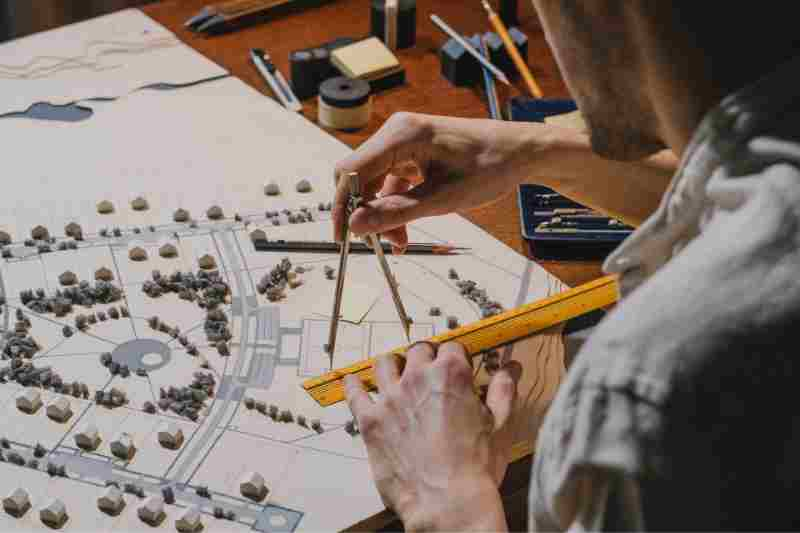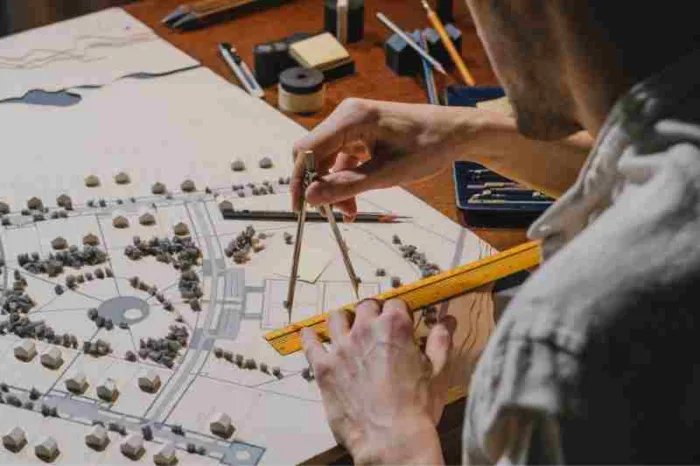Key takeaways
- Access control for architects is the process of planning where security and access systems will be installed before construction.
- Access control for architects is important because it helps create an all-encompassing design process.
- Five things to consider when designing access control include building layout, access points, future planning, regulation, and system integrations.

One of the most important jobs for an architect is shaping the way a new construction looks, functions, and performs. Whether you’re focusing on the structure or the finer details, design is at the heart of your work. So, preplanning for access control is crucial. In fact, access control systems for architects is a key part of the new world of architectural design.
The function of access control is critical, and that includes innovating the ways people interact with entry points.
Below, we take a closer look at how access control is an architect’s business. Plus, things to consider before integrating your access designs into a building plan.
In this post, discover:
- What is access control for architects?
- 5 important considerations when preplanning access control design
- What is the best access control system for architects?
What is access control for architects?
Access control for architects is the process of designing the most effective location for access control units before construction begins.
Planning the location of an access control system during the design phase greatly enhances your designs. Further, it saves money for your clients in the long run, who won’t have to make any renovations to accommodate an access control system.
What are the types of access in architecture design?
The most important types of access in architectural design include:
- Doors. The most important access control elements to preplan are doors. These are the most frequented entry and exit points and, therefore, must be the most secure.
- Elevators. Depending on the type of property you’re designing, elevators are an excellent consideration for access control. For instance, some elevators often access sensitive spaces such as offices or condo units that deserve privacy.
- Gates. Access control to off-building parking garages or property gates creates an extension to the building. Access control between gates and entrances shouldn’t be overlooked in the design phase.
- Smart access control. The newest type of access in architectural design is smart access control which includes preplanning the placement of intercoms, keypads, vehicle readers, and other smart access control devices.
5 important considerations when preplanning access control design
Preplanning basic access control design is important to ensure the integration of user experience, security, and safety within a new development. Additionally, by understanding the access control needs upfront, architects and developers can easily construct a cohesive environment.
Here are five of the most important things to consider when preplanning an access control system in a new building:
1. Building layout
Having a solid understanding of the building’s final layout is a great help when planning out your access control design.
But why do you need to wait until you already have an agreed-upon layout for the project?
While wireless access control systems are simpler than wired systems, integrations and other types of wiring can make it difficult to change plans. This can delay projects and cause general frustration.
2. Access points
As mentioned above, entry points should be your main focus as these are critical points of access and security.
Access points to consider in your project include:
- Entrances
- Emergency exits
- Amenity rooms
- Elevators
- Stairways
Once you have a list of all entry points, consider their security needs.
For instance, review how sensitive the spaces are that you want to allow access to. How secure do they need to be? What kind of access control would best suit your needs?
Types of access control include:
- Biometric. Fingerprint, facial recognition, and voice control are all examples of biometric security measures. These are perfect for buildings with high-security protocols, like healthcare or government buildings.
- Card readers. Key cards and fobs are great security measures for casual access control and safety. They don’t trip people up or make access difficult, but they do provide adequate amounts of security.
- Keypads and smart locks. Keypads and smart locks create a seamless entry experience to any space by eliminating the need for cards and fobs. With advanced keypads, users can also use their smartphones to enter buildings if they don’t remember their PIN.
- Video intercoms. If you predict that visitors and guests will make up a significant percentage of traffic, smart video intercoms can be extremely useful. Not only do they provide the chance for touchless entry, but they also make it easy for guests to video call for access. Further, the best video intercoms take a date- and time-stamped photo of each entry event and store them in an audit log.
Watch this simple access control guide:
3. Future planning
When designing access control systems for new developments, opting for a wireless method will make it easier to plan future construction additions to the property.
With many wired access control systems, installation is what makes future planning difficult. Not only do installers have to assess how to change the wiring, but they also have to evaluate if it will work with a new layout.
4. Regulations
As with any construction project, regulations play a large role in architectural design and access control planning. Knowledge of building codes and local regulations can help reduce the risk of revising your design after the fact.
Furthermore, understanding the permits needed to operate a security system will help your clients once they take ownership of the finished property.
5. System integrations
You’re likely aware that system integrations are an important part of physical access control architecture — especially in smart building development.
In many smart buildings, HVAC systems, alarms, and solar lighting are integrated into one system.
With the right access control system, you can connect all these aspects to create an enhanced technological ecosystem for safety and convenience.
What is the best access control system for architects?
The best access control system for architects is ButterflyMX because it offers a versatile design and product line to suit different needs. Moreover, ButterflyMX is a wireless access control system, making it an excellent choice for expanding projects because of its simple installation.
ButterflyMX products for architectural design include:
- Smart video intercom. The ButterflyMX video intercom is the perfect solution for many new developments. Residents or owners can remotely open doors and gates or allow guest entry from their smartphones.
- Keypads and card readers. Users can use the ButterflyMX smartphone app to access amenity rooms, offices, and more. ButterflyMX keypads and readers are IP55 outdoor-rated and can withstand temperatures from -31° F to 150°F.
- Vehicle readers. Offer a hands-free way for tenants to access the property you’re designing by planning a space for the ButterflyMX vehicle access control system.







